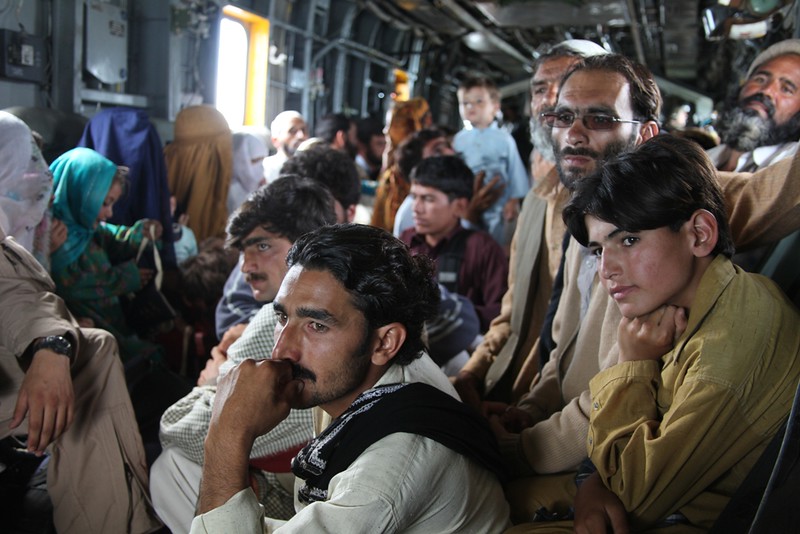5 Facts About Orangi Town: the World’s Largest Slum
 Located in the northwest periphery of Karachi, Pakistan lies the world’s largest slum, Orangi Town. This slum is home to over 2.4 million people. Established almost 18 years ago, it stands as the largest town in Karachi. While it does not have a notorious reputation for poverty like many other slums across the world, the people in Orangi Town do have to deal with a lack of basic amenities and services. These are five important facts about Orangi Town, the world’s largest slum.
Located in the northwest periphery of Karachi, Pakistan lies the world’s largest slum, Orangi Town. This slum is home to over 2.4 million people. Established almost 18 years ago, it stands as the largest town in Karachi. While it does not have a notorious reputation for poverty like many other slums across the world, the people in Orangi Town do have to deal with a lack of basic amenities and services. These are five important facts about Orangi Town, the world’s largest slum.
5 Facts About Orangi Town: The World’s Largest Slum
- The 12th Largest Megacity: In 2016, the U.N. named Karachi the 12th largest megacity with a projected population of 18.7 million people by 2025. Orangi Town also is home to a very diverse group of ethnicities including the Seraikis, Sindhis, Bohras, Ismailis, Punjabis, Mahajirs, Pakhtuns and Kashmiris. Despite the variety in ethnicity, Orangi Town is 99 percent Muslim, which implicates a lack of religious diversity.
- Water Scarcity: Water scarcity is one of the most potent problems in Orangi Town. The town relies heavily on the Hub Dam, which is unreliable at providing sufficient water. As a consequence, Karachi officials must look at alternate ways of obtaining safe drinking water. Experts found that the other channels have many pathogens in them. Water quality is the culprit of 40 percent of deaths in Pakistan and a prominent cause of child mortality, with 60 percent dying from diarrheal diseases.
- The Orangi Pilot Project: In 1980, Dr. Akhtar Hameed Khan founded the Orangi Pilot Project with the goal of alleviating the effects of poverty across the region. Dr. Khan emphasized the need to create affordable sanitation, health, housing and finance facilities. Currently, there are three institutions operating under the Orangi Pilot Project; the OPP Research and Training Institute, which manages sanitation and housing; the Orangi Charitable Trust, which specializes in finances; and the Karachi Health and Social Development Association, which manages health programs. Through research and promotion of education for citizens on pertinent topics, the Orangi Pilot Project became one of the most successful nongovernmental organization projects to date.
- Housing and Overcrowding: Similar to many slums in the world, Orangi Town has a housing crisis with the demand for homes three times higher than the supply. Roughly eight to 10 people share a two-bedroom household in many parts of Orangi Town. The suboptimal living conditions that overcrowding causes, combined with the lack of services such as clean water, led to the spread of harmful diseases such as cholera and dengue fever.
- Gang Violence: Orangi Town suffers from the effects of crime and violence all too common in poverty-ridden areas. Many instances of gang violence are a product of the various ethnicities that reside in Orangi Town. This led to turf conflict where groups mark their land, usually based trade and markets, and employ violent tactics toward those that encroach on their land. Furthermore, studies show that women are more susceptible to petty crimes and sexual harassment due to the socioeconomic standards in Orangi Town. From 2011 to 2014, 77 percent of women in Orangi Town were victims of rape.
While the situation may seem hopeless due to the plethora of issues including an inefficient government and ethnic tension, Orangi Town is taking steps in the right direction to help eradicate the effects of poverty. Sanitation continues to be a core problem in the region, but the efforts of the OPP and individual citizenry are significant. In 2016, Saleem Khan, a resident of Orangi Town, developed a plan to create a new sewer system and pipeline to eliminate wastewater and halt the spread of detrimental diseases on his street. The growth of microfinance and work centers for women helped strengthen the economy and facilitate cooperation, as opposed to conflict, across the people in Orangi Town. It is imperative that the government reforms the anarchical nature of Orangi Town and takes initiative to abate the widespread crises. Funding infrastructure projects, creating schools and building homes will go a long way to improve the lives of millions in Orangi Town, the world’s largest slum.
– Jai Shah
Photo: Flickr
